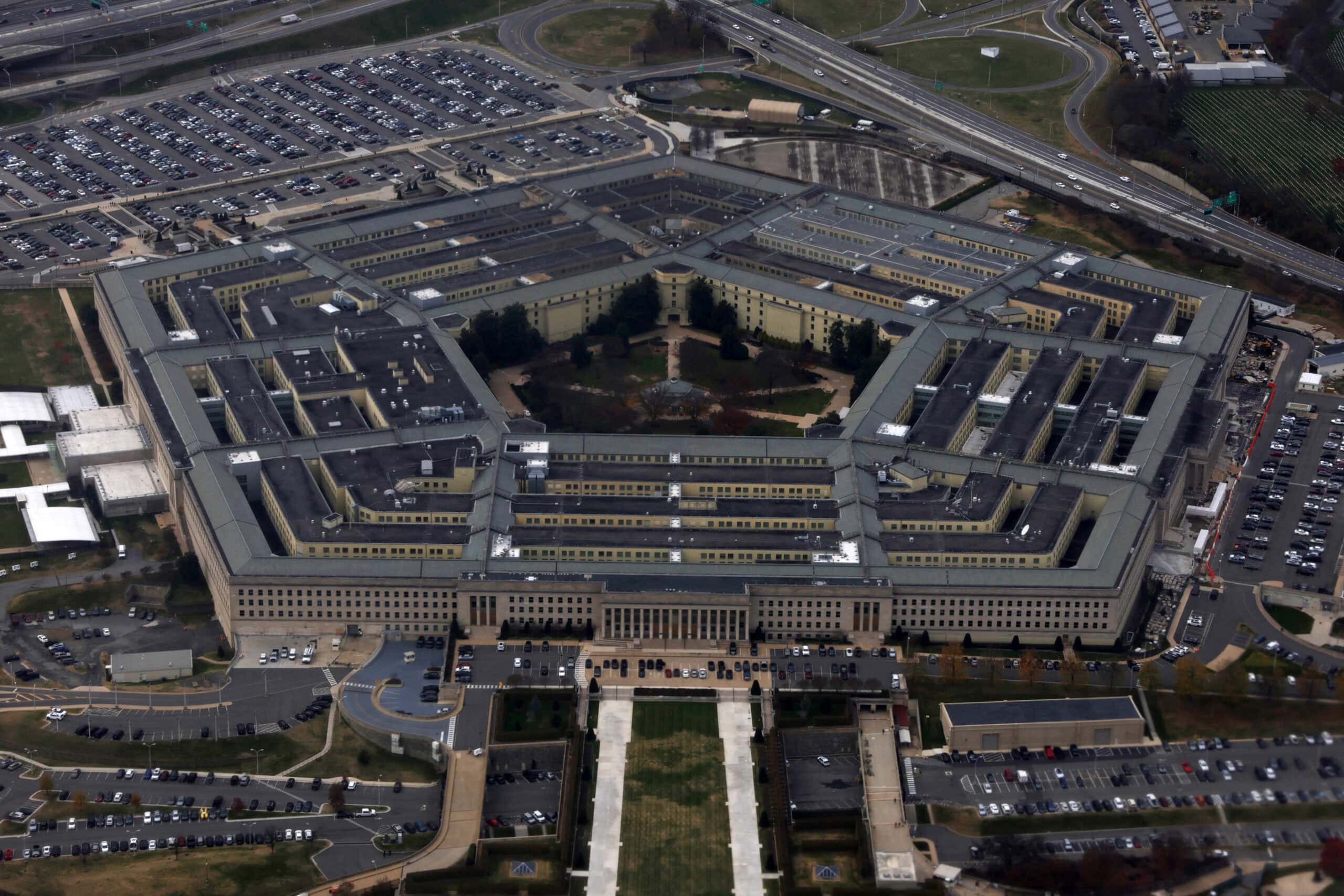
Since the fall of the Soviet Union in late 1991, American military hegemony was all but unchallenged for the next quarter century. However, that status quo is under threat. While the ‘big five’ US defense contractors still dominate the top spots, less than half of the companies featured here are American. China’s increased military spending has catapulted its state-owned industrial conglomerates to the forefront of the global defense sector. This article will examine the world’s 15 largest defense contractors.
Why This Matters
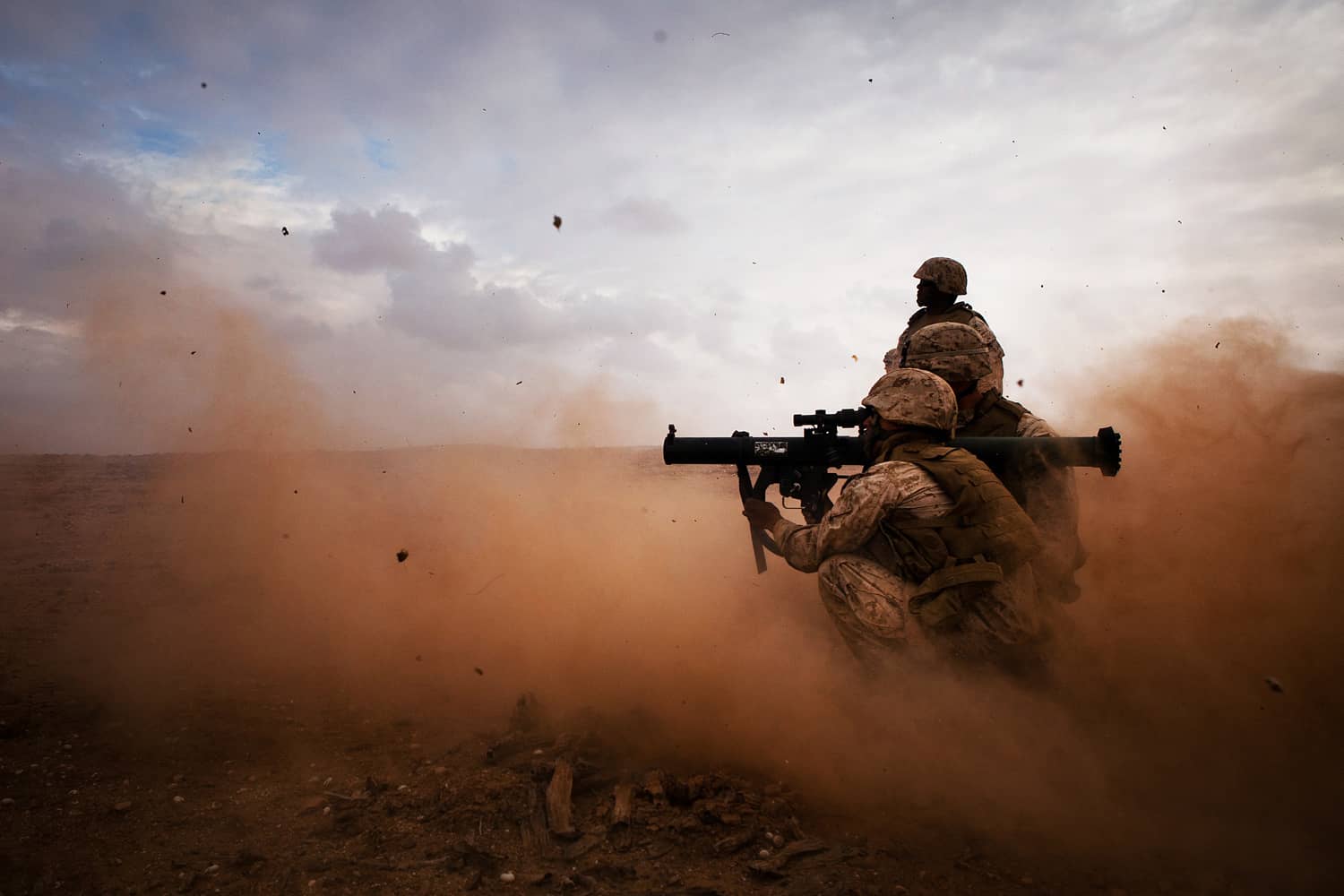
With China investing heavily in its armed forces and ongoing wars in Ukraine and Gaza, the US faces serious challenges in the present and near future. Knowing who and where the biggest defense contractors are is key to understanding the geopolitical landscape.
A Note On China’s “Real” Defense Budget
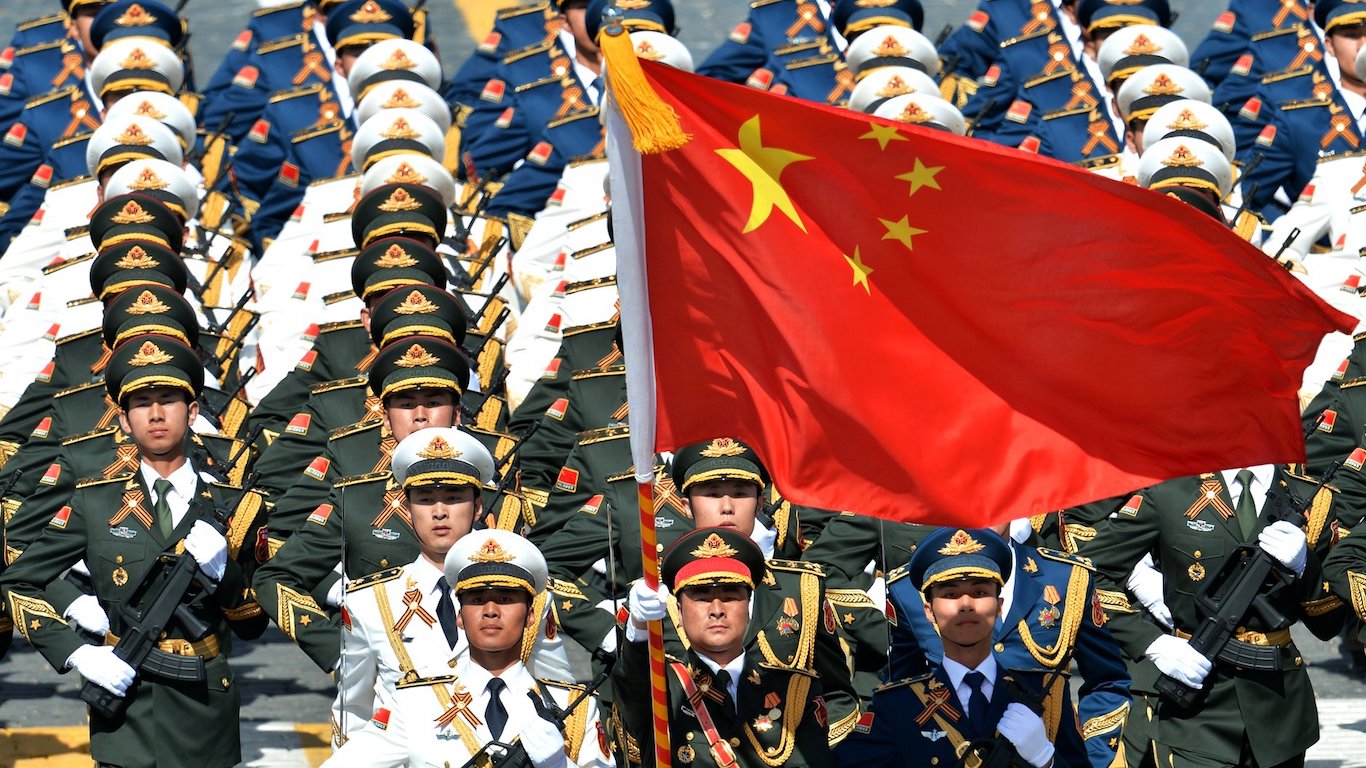
Officially, China’s defense budget for 2022 was approximately $229 billion. That would place it a comfortable second in the world but still far behind the United States. However, it is widely believed Beijing’s reported budget and the true figure are miles apart. One think tank alleges China spent $700 billion, achieving near-parity with the United States. A more considered analysis from April 2024 puts that figure at roughly $476 billion or just under 60% of the American total. The gap is still wide but it’s closing. The figures used here are from the most recent and comprehensive sources available.
15 – China Aerospace Science and Technology Corporation (China)
Defense Revenue: $9.61 billion
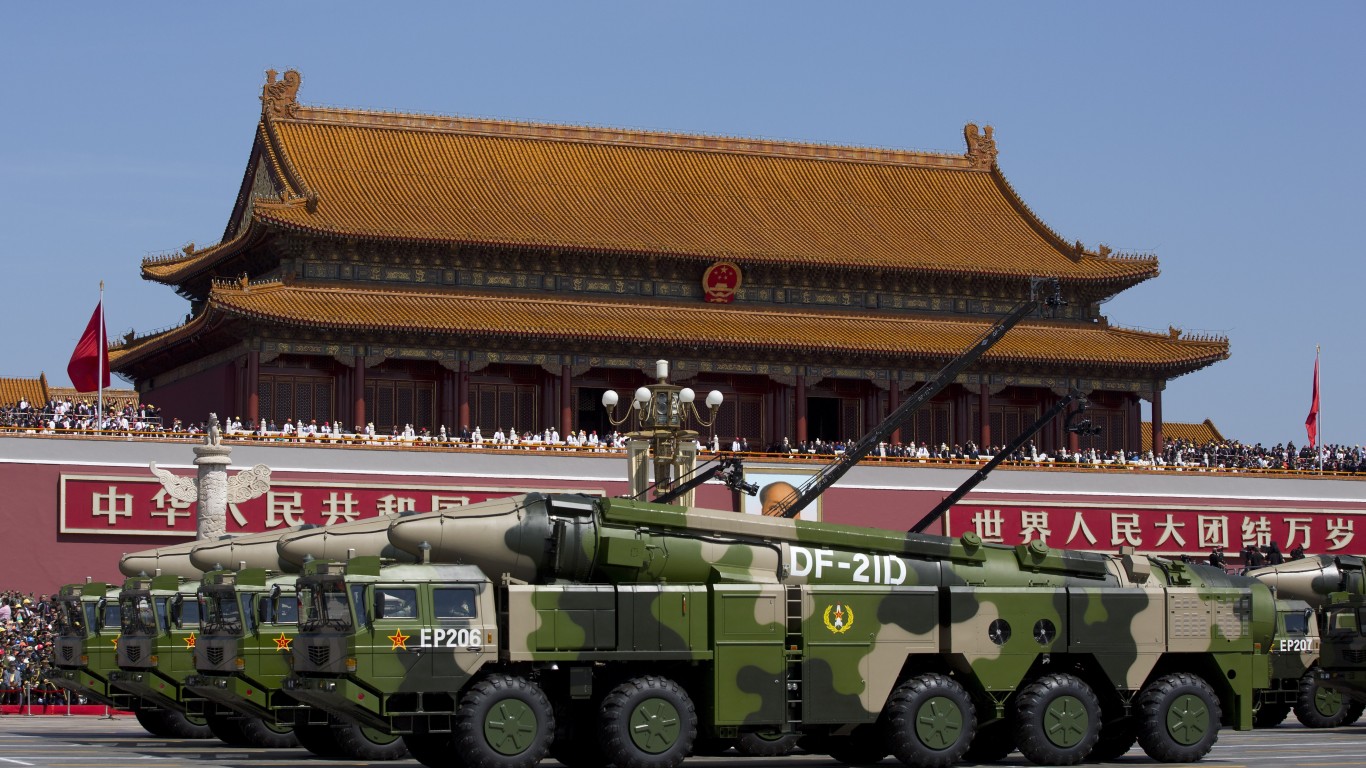
China has invested heavily in anti-area and access denial (A2/AD) weapon systems as part of its modernization program. In simple terms, A2/AD weapons prevent an adversary from moving within a contested area. With military intervention in Taiwan increasingly likely, these weapons will be crucial in keeping the United States at bay. China Aerospace Science and Technology Corporation (CASC) is one of the main suppliers of these weapons systems. Among others, CASC produces the DF-26, a medium-range ballistic missile known as the “carrier killer.”
14 – Thales (France)
Defense Revenue: $9.64 billion
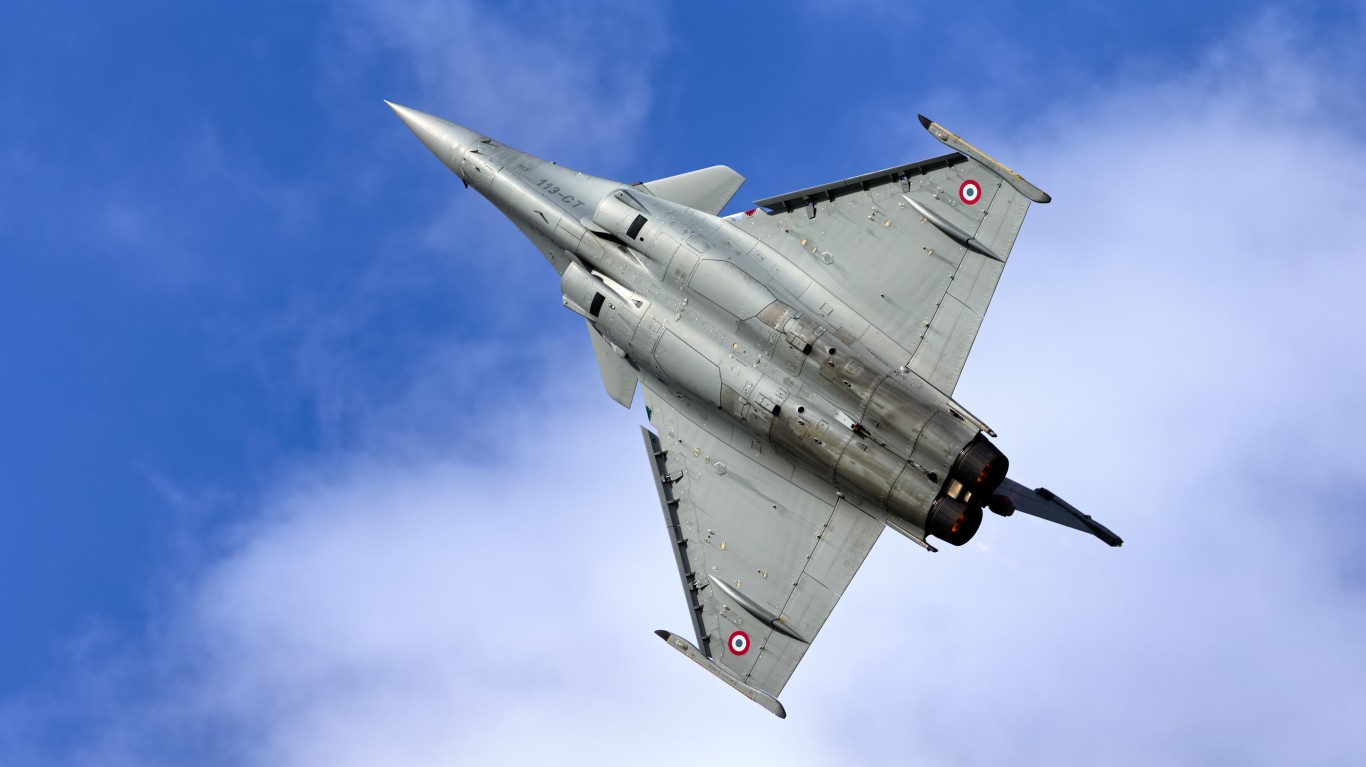
Thales is a French multinational formed in 2000 as part of a rebrand from Thomson-CSF. The company is part-owned (26.06%) by the French state with defense just over half of its revenue. Thales specializes in communications, mission systems, and sensors. The company signed a major contract with the US Army in 2022 worth up to $6 billion to deliver advanced tactical radios. The British Armed Forces are another major customer, Thales won a $2.4 billion contract with the Royal Navy in 2024. Thales is a major parts supplier (25%) for the Dassault Rafale, a multi-role fighter used by Egypt, France, India, and Qatar. Indonesia and the UAE also have outstanding orders for the aircraft.
13 – HII (United States)
Defense Revenue: $10.6 billion
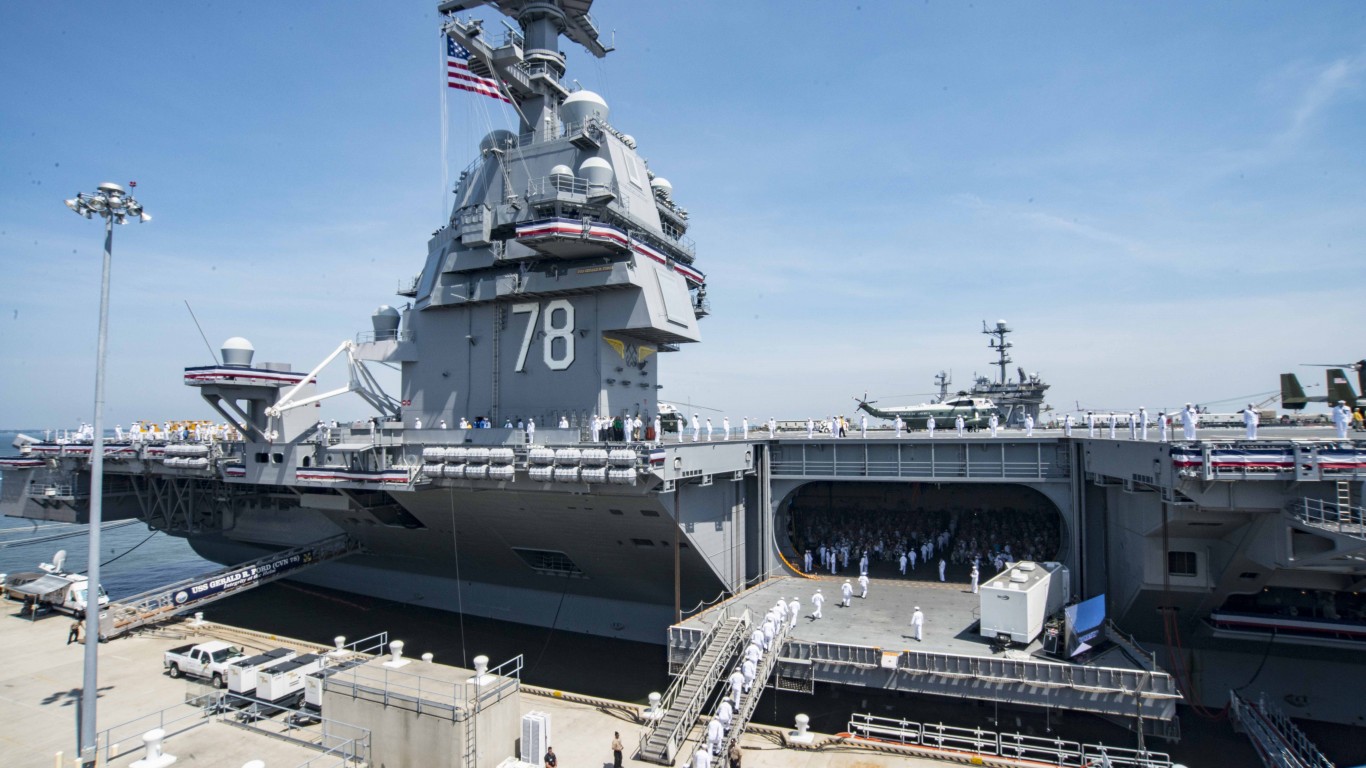
China has more surface ships than the United States but in terms of overall tonnage, the US Navy is still the world’s largest. Huntington Ingalls Industries (HII) builds and maintains most of those ships. HII is the only company that builds nuclear-powered aircraft carriers. The US Navy has 11 carriers with three new Ford-class supercarriers under construction at Newport News, VA. Additionally, HII manufactures submarines and amphibious ships. The company won a $22 billion contract alongside General Dynamics to build nine Virginia-class submarines in 2019.
12 – Airbus (Netherlands/France)
Defense Revenue: $12 billion
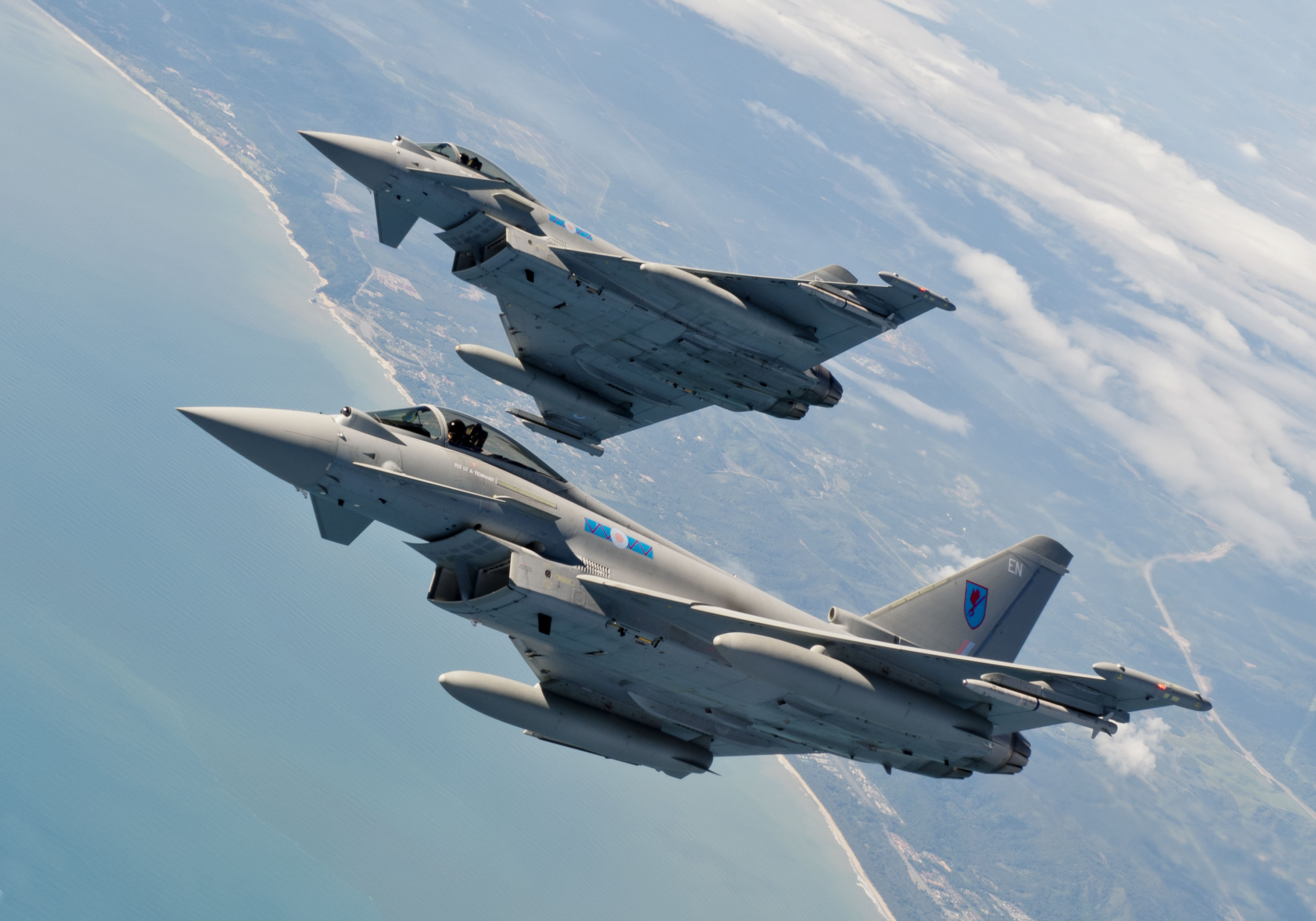
Founded in 1970, the European conglomerate is primarily known for manufacturing commercial aircraft but has considerable interest in defense. The company is part of the Eurofighter Typhoon program, which currently has 500 jets in service, and also builds military transport aircraft and tankers. It will also participate in the Future Combat Air System (FCAS) program. One of the main objectives is to design the next-generation fighter jet to replace the Typhoon by 2035-40. FCAS will primarily serve the air forces of France, Germany, and Spain.
11 – Leonardo (Italy)
Defense Revenue: $12.8 billion
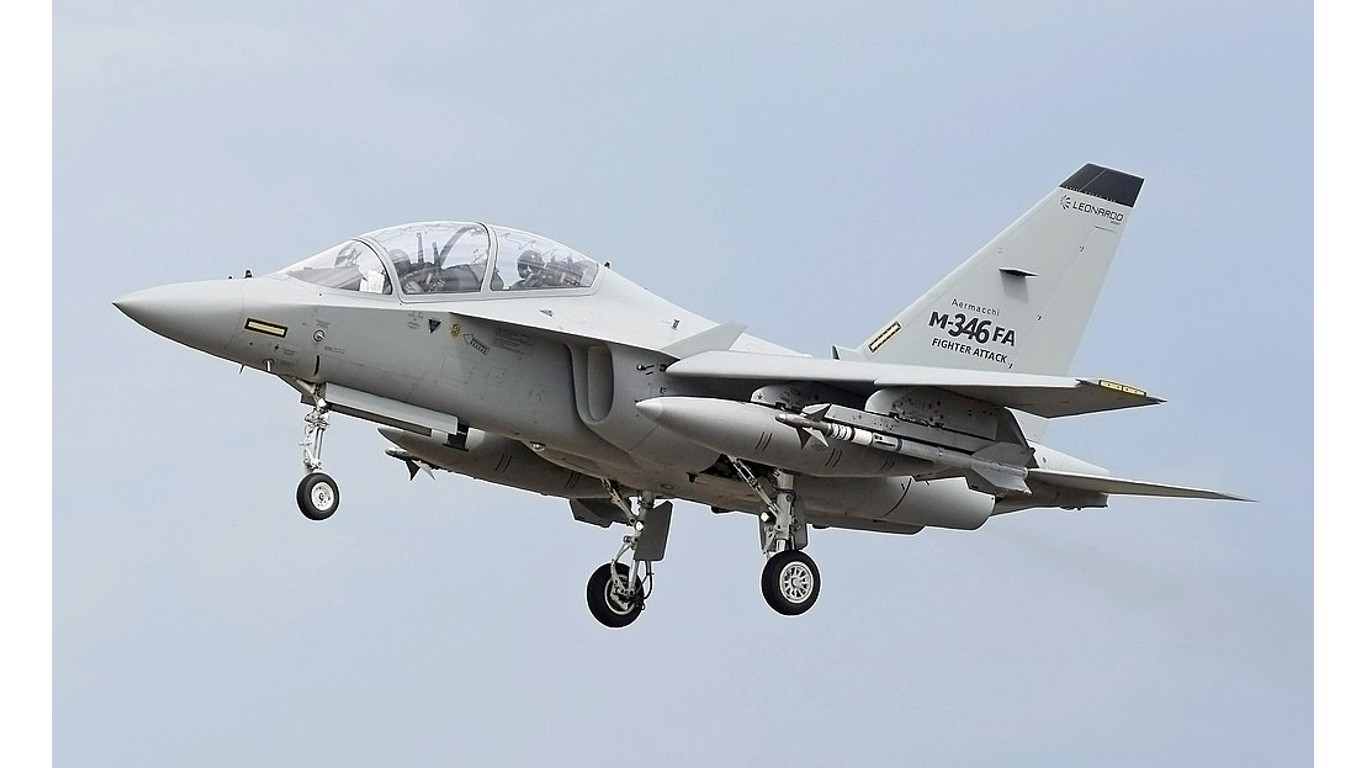
Leonardo is an Italian company that was founded as Finmeccanica in 1948. The company took its current name from the Renaissance artist and inventor, Leonardo da Vinci. Like Airbus, Leonardo supplies parts for the Eurofighter Typhoon. As well as naval munitions, the company manufactures training aircraft. The air forces of Greece, Israel, Italy, Qatar, and Singapore use the M-346 built by Leonardo.
10 – China South Industries Group (China)
Defense Revenue: $13.4 billion
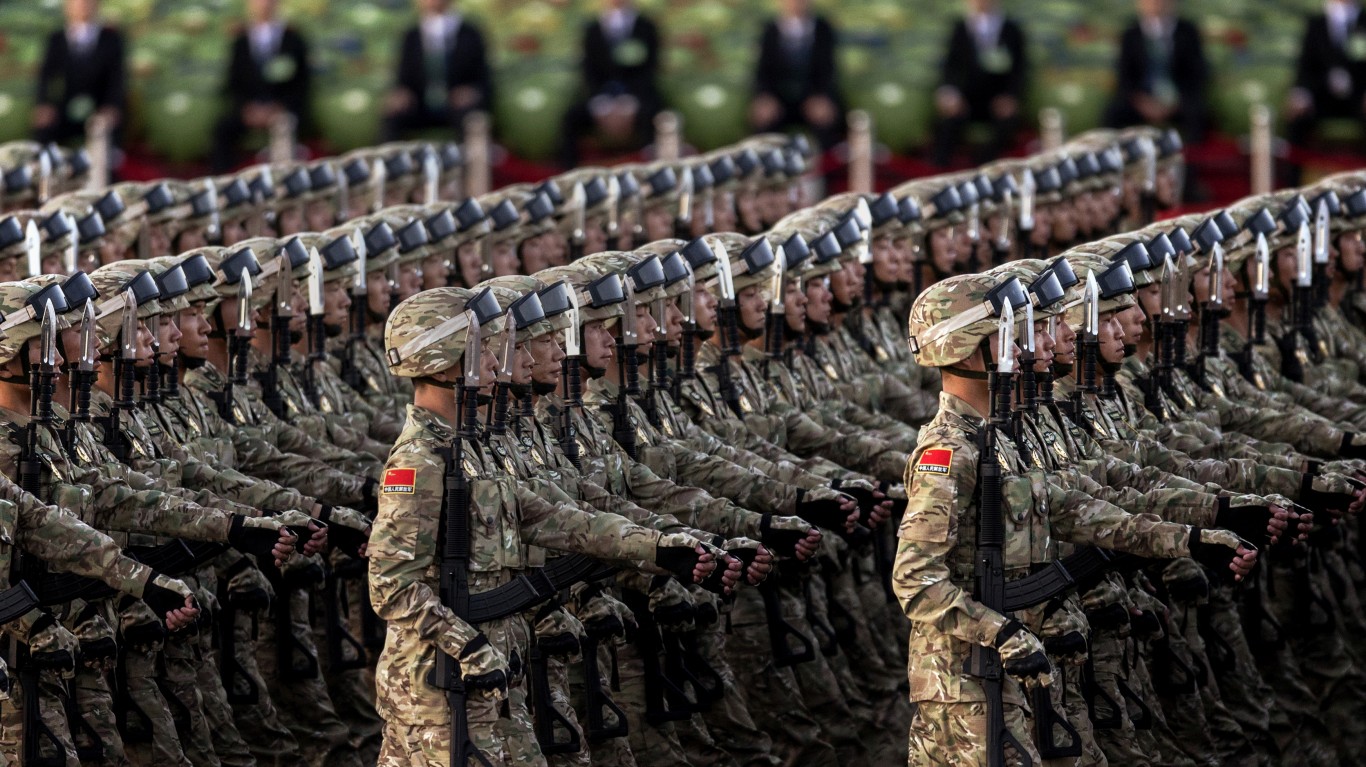
Founded in 1999, China South Industries Group (CSGC) is a state-owned Chinese conglomerate with a controlling stake in over 60 subsidiaries. CSGC produces vehicles and parts, small arms, and ammunition and is one of the leading providers of small arms for the People’s Liberation Army (PLA). With over two million active service personnel, the PLA is the largest military in the world.
9 – L3 Harris Technologies (United States)
Defense Revenue: $13.9 billion

L3 Harris Technologies was formed by a merger between L3 and the Harris Corporation in 2019. The company focuses on military technology in communications equipment, electronics, and missile detection systems. L3 Harris has won several major contracts with the Department of Defense (DoD). In 2021, the company won a $3.3 billion with the DoD for communications equipment in 2021. L3 Harris signed a $6 billion deal to modernize the US Army’s tactical radios in April 2022. In early 2024, the company won a $919 million contract to deliver and operate satellites for missile-tracking.
8 – China North Industries Group (China)
Defense Revenue: $17.9 billion

Also known as Norinco, the Chinese conglomerate was established in 1999. Norinco is one of the leading contractors in China’s ambitious Belt and Road Initiative (BRI), a global infrastructure program to expand China’s influence. Defense accounts for about 20% of Norinco’s revenue. The company produces tanks, armored vehicles, long-range missiles, and technical support for the PLA. It also manufactures China’s service weapon, the Type 95. Accordingly, Norinco is one of the main beneficiaries of the PLA’s modernization program. Norinco is also a major arms exporter with a growing presence in Africa.
7 – BAE Systems (United Kingdom)
Defense Revenue: $25.2 billion
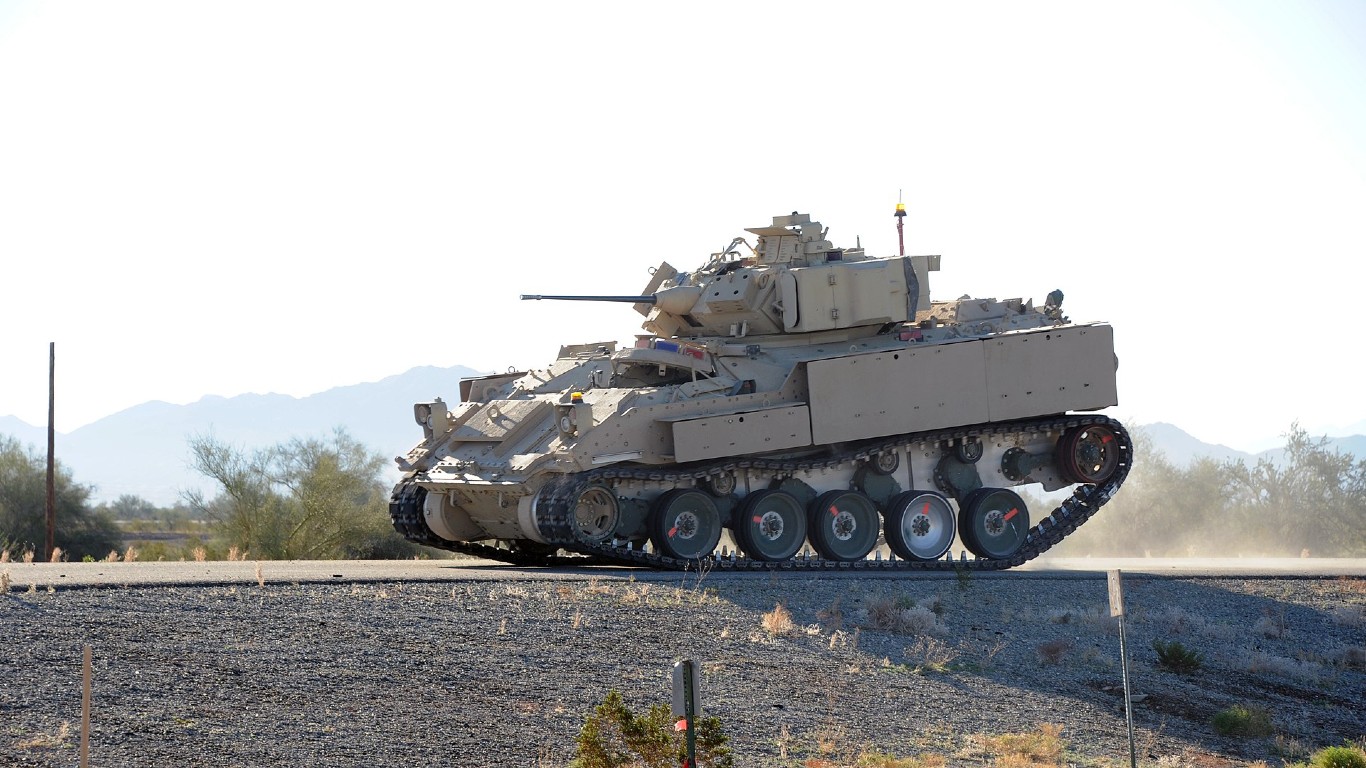
British Aerospace (BAE) is Europe’s largest defense contractor. The company was formed in a 1999 merger with Macaroni Electronic Systems. The consolidation of defense companies in the 1990s wasn’t only an American phenomenon. As well as electronics and cybersecurity, BAE works on some of the most advanced military aircraft, vehicles, and ships currently available. BAE supplies parts for the F-35 Lightning II and the Eurofighter Typhoon. The company won a major contract for Bradley Fighting Vehicles with the Department of Defense in 2023. Additionally, BAE is working on the UK’s next generation of nuclear submarines along with its partners. Dreadnought class submarines will fully supplant Vanguard submarines as the UK’s nuclear deterrent by 2030.
6 – General Dynamics (United States)
Defense Revenue: $30.4 billion
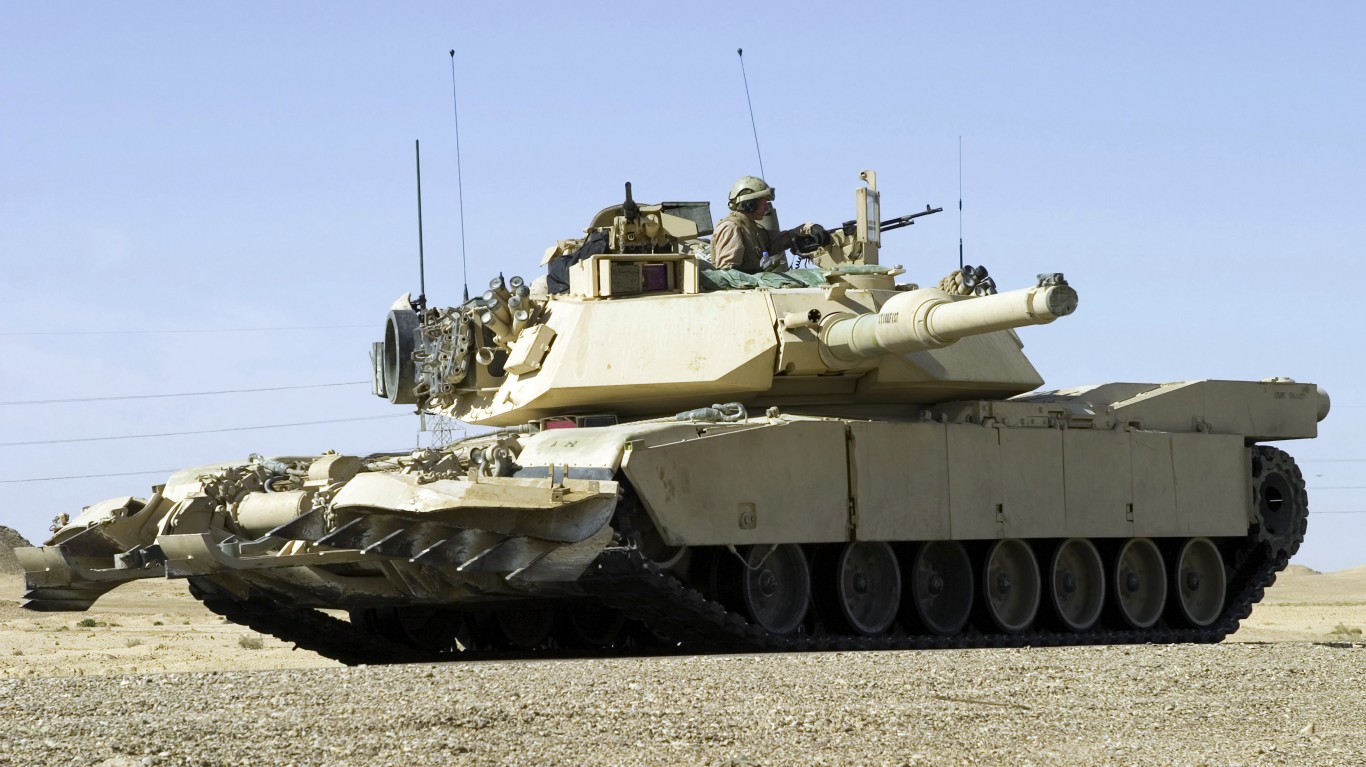
General Dynamics is one of the ‘big five’ defense contractors in the United States though China’s AVIC pushes it just outside the world’s top five. Formed in 1952, the company has a diverse portfolio of subsidiaries that produce military vehicles, submarines, and munitions. General Dynamic Land Systems builds a range of armored vehicles for the United States and European armed forces. The most notable is the M1 Abrams and its variants which have been the mainstay of the US Army for decades. The United States agreed to send 31 Abrams to Ukraine in 2023.
Another subsidiary, Electric Boat, based in Groton, CT, has built submarines for the US Navy since 1899. The company received a $17.6 billion contract for 10 Virginia-class submarines, the biggest shipbuilding contract ever until it won an even larger $22.2 billion deal for nine more submarines in 2019.
5 – Boeing (United States)
Defense Revenue: $30.8 billion
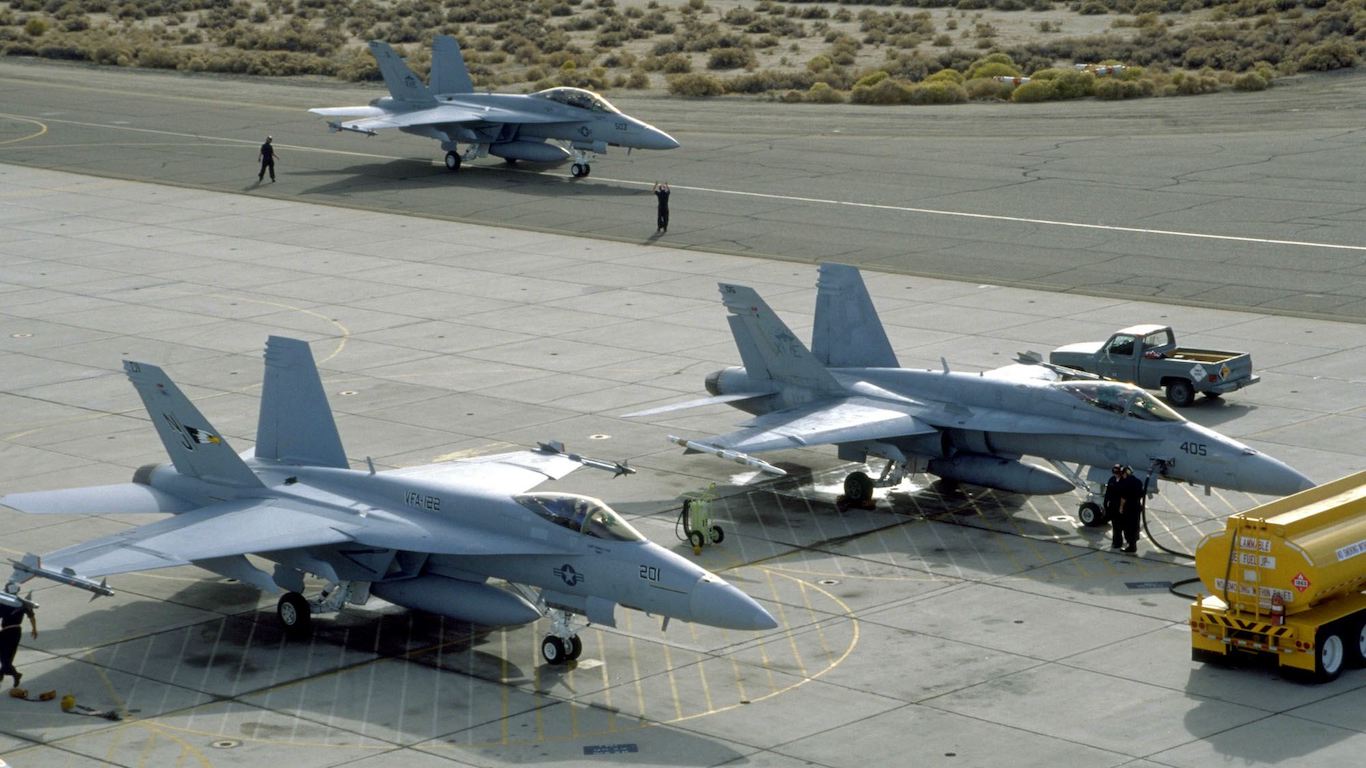
The aerospace giant is a leading manufacturer of commercial and military aircraft. Boeing was formed in 1916 and its present formation came in 1997 after merging with McDonnell Douglas.
Defense contracts make up a little under half of the company’s revenue. Boeing is responsible for some of the most iconic military aircraft in history. The B-52 bomber is still in service after 72 years and its service life could extend into the 2040s. The F/A 18 Super Hornet is a mainstay of the US Navy, the multirole carrier-based fighter has been in service since 2001. A final $1.1 billion contract for 17 Super Hornets was agreed in March 2024.
Boeing also makes some of the world’s most recognizable military helicopters such as the AH-64 Apache and the H-47 Chinook. The company also builds air defense systems and drones. While 2024 has certainly been a year to forget for Boeing, the company is still landing large defense contracts.
4 – AVIC (China)
Defense Revenue: $30.9 billion
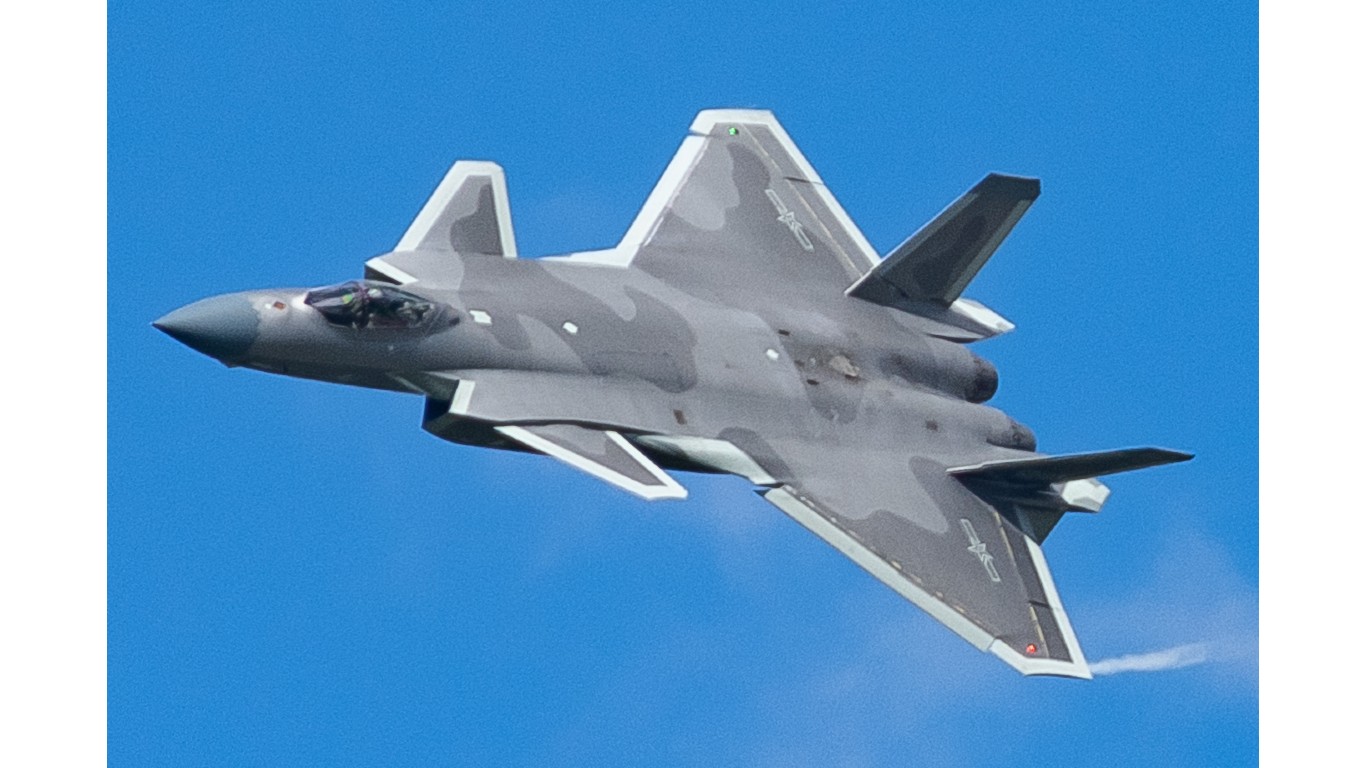
The Aviation Industry Corporation of China (AVIC) is the largest non-US defense contractor in the world. Founded in 1951 as the Aviation Industry Bureau, the company enjoys a monopoly on military aircraft production and maintenance in China. The People’s Liberation Air Force is currently the third-largest air force in the world but is expected to surpass Russia and the United States before long. Among others, AVIC builds China’s 4th generation multirole jet, the Chengdu J-10 also known as the ‘Vigorous Dragon’.
The 5th generation J-20 “Mighty Dragon’ entered service in 2017 and its inventory is rapidly expanding. While top US officials don’t consider it a match for the F-35, it’s still a cut above most other jets and quantity is often its own quality.
3 – Northrop Grumman (United States)
Defense Revenue: $32.4 billion
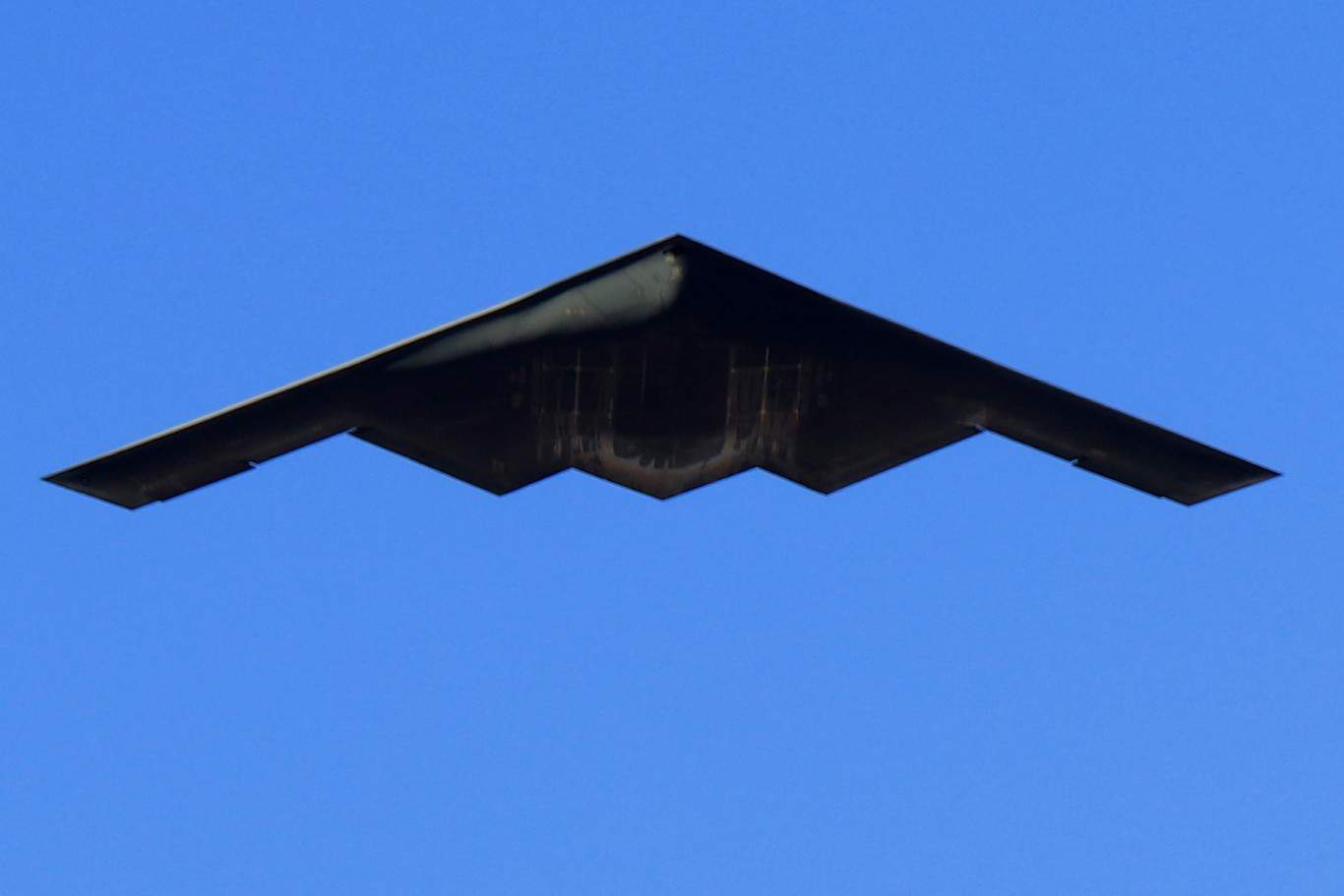
Northrop Grumman was formed in 1994 when Northrop Corporation purchased Grumman Corporation. The company specializes in manned and unmanned aircraft, missile defense, navigation, radar, and space. As well as subcontracting on the F-35 Lightning II and Super Hornet, the company is responsible for some of the best-known military aircraft in its own right.
Northrop built the B-2 Spirit, perhaps ironically the most prominent stealth bomber in service today, and is working on its successor, the B-21 Raider. Grumman took over support for the A-10 Thunderbolt II in 1987. The notoriously tough close-support aircraft is still in service. The company also works on autonomous systems like the Global Hawk and MQ-4C Triton.
2 – RTX (United States)
Defense Revenue: $39.6 billion
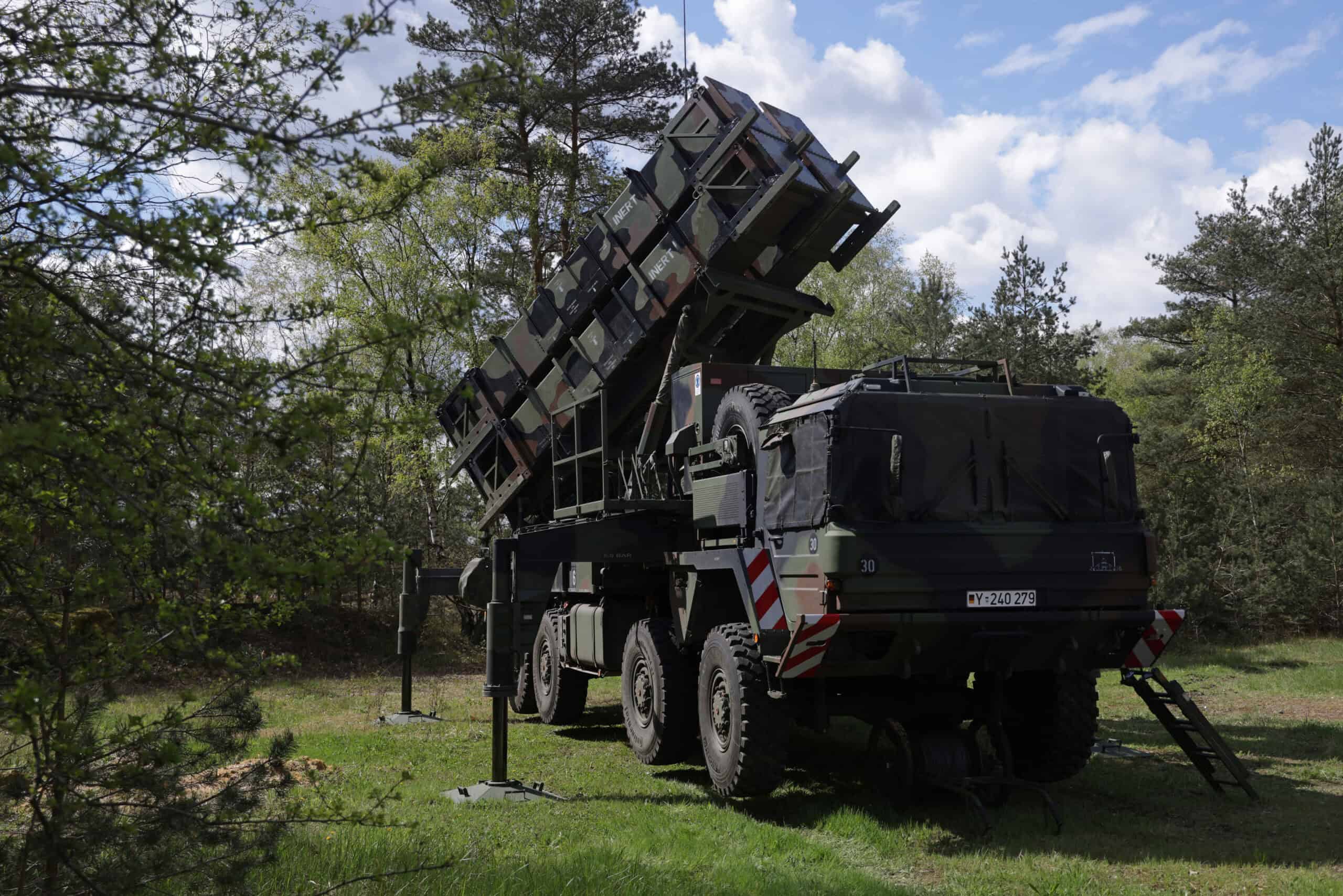
By total revenue, RTX is the largest American company featured in this article. However, like Boeing, the company previously known as Raytheon derives a significant portion (41%) of its revenue from civilian contracts. Its defense interests include aircraft engines, air defenses, drones, guided missiles, and hypersonics.
Pratt and Whitney, an RTX subsidiary, manufactures the F135 engine used in the F-35 Lightning II. The DoD ordered 500 F135 engines in a $5.2 billion contract awarded to Pratt and Whitney in 2023. Collins Aerospace, another RTX subsidiary, makes advanced components for civilian and military aircraft. Raytheon, the third major subsidiary, produces air defenses, guided missiles, and drones. The MIM-104 Patriot is a missile defense system used by the United States and several allies. Ukraine took delivery of badly needed Patriots in 2023.
Countermeasures for drones are a growing priority for the US military and Raytheon won a large contract to provide hundreds of Coyote interceptors in December 2023.
1 – Lockheed Martin (United States)
Defense Revenue: $63.3 billion
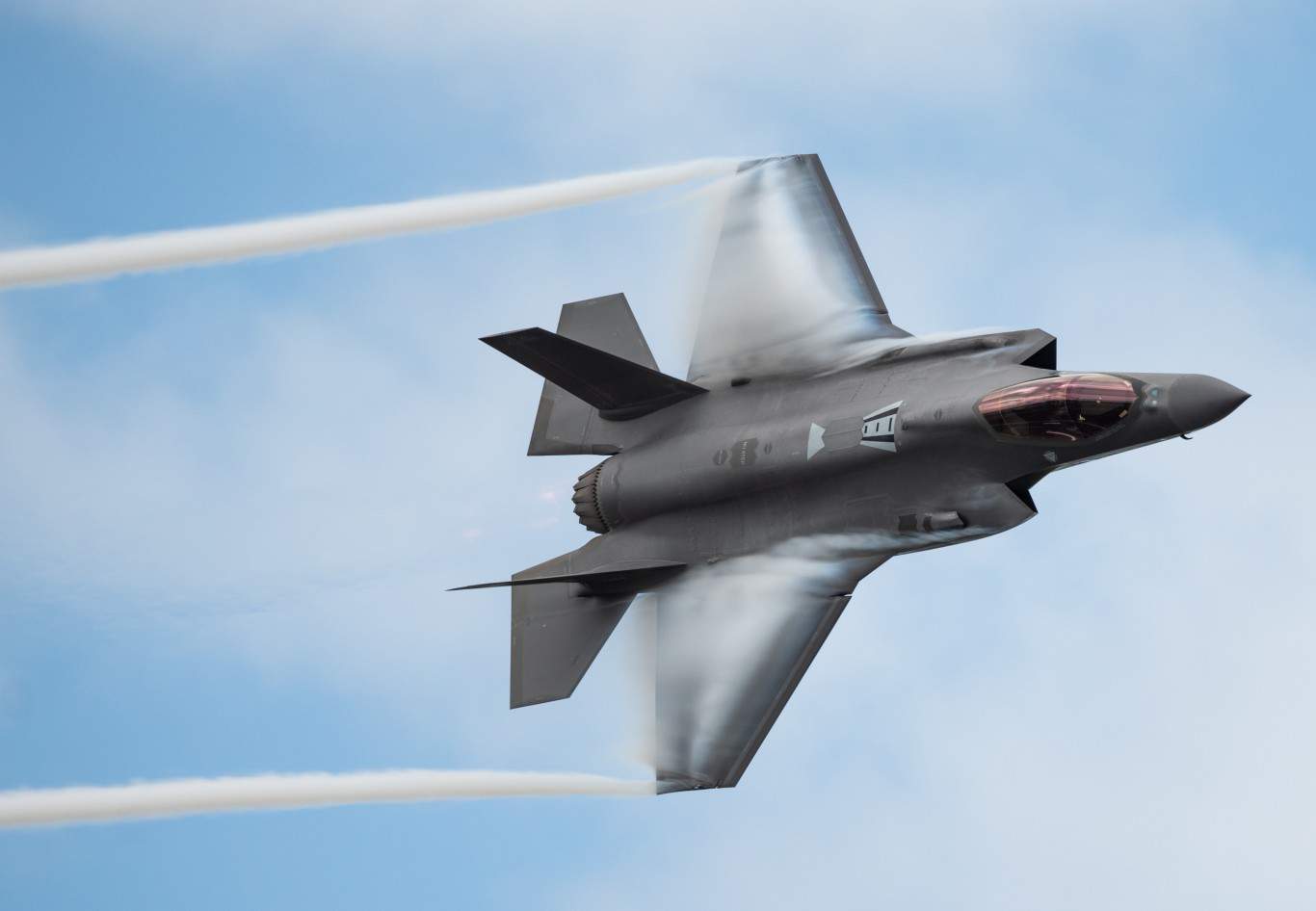
Lockheed Martin takes in slightly less overall revenue than Boeing and RTX but because almost all of its income (96%) stems from defense, it is the largest defense contractor by a distance. The company was formed by a 1995 merger between Lockheed Corporation and Martin Marietta. Lockheed Martin has a diverse portfolio of products and services but its most lucrative is in military and rotary-wing aircraft.
It builds the Blackhawk helicopter and the C-130 Hercules both are versatile workhorses of the US military with exceptionally long service lives. Lockheed Martin also manufactures fourth and fifth-generation multirole fighters. It is the prime contractor on the F-16 Fighting Falcon, F-22 Raptor, and the F-35 Lightning II. The latter is the most expensive weapons program in history, with a projected lifetime cost north of $1.5 trillion.
Conclusion
Aircraft manufacturers dominate the top spots on this list. Given the staggering costs of the program, it’s no surprise to see the main contractors for the F-35 (BAE, Northrop Grumman, RTX, and Lockheed Martin) feature in the top ten. As much as software is becoming a major priority, producing military hardware is still the most lucrative practice for defense contractors. Concerns in the West over China’s growing military prowess are well-founded but 11 out of 15 companies profiled here are either American or from NATO countries. Maintaining an effective deterrence will be a challenge but it is still well within the grasp of the United States and its allies.
It’s Your Money, Your Future—Own It (sponsor)
Retirement can be daunting, but it doesn’t need to be.
Imagine having an expert in your corner to help you with your financial goals. Someone to help you determine if you’re ahead, behind, or right on track. With SmartAsset, that’s not just a dream—it’s reality. This free tool connects you with pre-screened financial advisors who work in your best interests. It’s quick, it’s easy, so take the leap today and start planning smarter!
Don’t waste another minute; get started right here and help your retirement dreams become a retirement reality.
Thank you for reading! Have some feedback for us?
Contact the 24/7 Wall St. editorial team.




